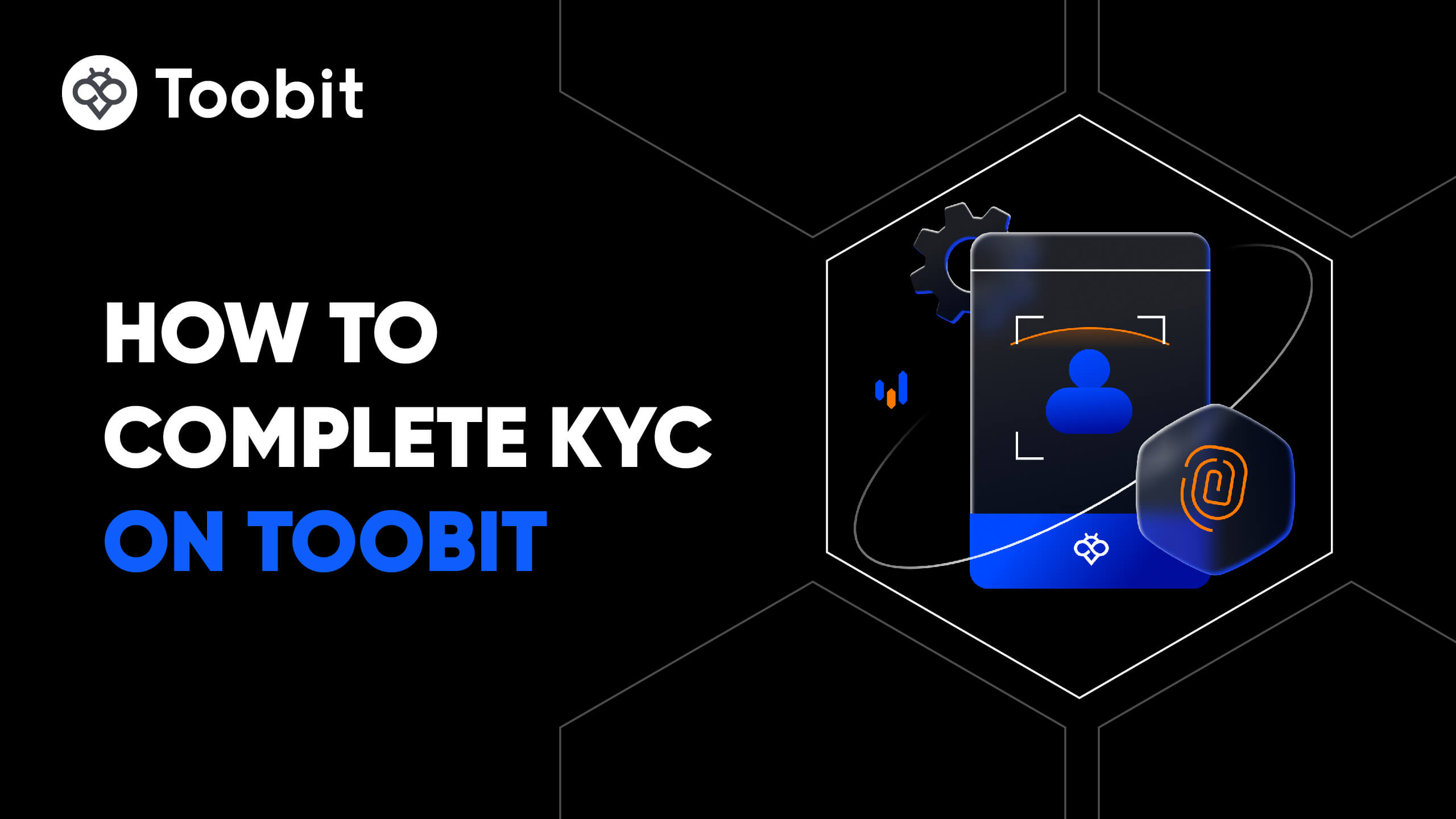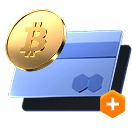Cosmos price
ATOMCosmos market info
Live Cosmos price today in USD
How much is 1 ATOM worth in ?
About Cosmos(ATOM)
Cosmos price history
Why does the price of Cosmos always fluctuate?
What factors affect the performance of Cosmos prices?
Global Cosmos prices
How to buy Cosmos
Create your free Toobit account
Sign up on Toobit with your email address/mobile phone number and country of residence, and create a strong password to secure your account.
Verify your identity
Complete identity verification by submitting your personal details and a valid photo ID.
Add a payment method and buy Cosmos (ATOM)
Add a credit/debit card or bank account after verifying your Toobit account. Use multiple payment options to buy Cosmos on Toobit.
Trade ATOM perpetual futures
After signing up on Toobit and buying USDT or ATOM tokens, you can start trading derivatives, including ATOM futures and margin trading to increase your income.
Join ATOM copy trading with lead traders
After signing up on Toobit and successfully buying USDT or ATOM tokens, you can also start copy trading by following Lead Traders.
Where can I buy Cosmos?
Buy crypto on the Toobit app
Sign up within minutes to purchase crypto via credit card or bank transfer.
Trade on Toobit
Deposit your cryptocurrencies to Toobit and enjoy high liquidity and low trading fees.
Video section — quick verification, quick trading

How to complete identification on Toobit and protect yourself from fraud
- 1.Log in to your Toobit account.
- 2.If you're new to Toobit, watch our tutorial on how to create an account.
- 3.Click on the profile icon in the upper right corner of the navigation bar, then tap on Identification page.
FAQ About Cosmos (ATOM)
How does Cosmos work?
The Cosmos network is built on a three-layered, modular system:- Application Layer: Handles transactions and updates the network's state.- Networking Layer: Facilitates communication between different transactions and blockchains.- Consensus Layer: Ensures all nodes agree on the current state of the network.Cosmos uses its open-source toolset, including the Cosmos SDK and the Tendermint consensus engine, to link these layers. It operates using a Proof-of-Stake (PoS) mechanism, where validator nodes are prioritized based on the amount of ATOM they have staked. Validators verify transactions and earn rewards, but any malicious behavior results in the loss of their staked tokens (slashing).What are the potential use cases for Cosmos?
Cosmos (ATOM) is primarily centered on blockchain interoperability, scalability, and decentralized applications (dApps).- Cross-Chain Communication: The Inter-Blockchain Communication (IBC) protocol enables different blockchains to exchange assets and data seamlessly. This makes Cosmos ideal for DeFi platforms that need to move tokens across networks without relying on centralized exchanges.- Enterprise Solutions: Businesses can build efficient, customized private and public blockchains that can interact with each other, streamlining applications like supply chain management, financial services, and data sharing.- Staking and Governance: ATOM holders secure the network and influence its development through on-chain voting, ensuring the ecosystem is community-driven.- Scalable Infrastructure: Cosmos provides a highly scalable foundation for dApps, NFTs, and gaming projects by allowing them to launch their own independent, yet interoperable, blockchains.How does Cosmos facilitate interaction and movement of non-monetary resources between different blockchains?
Cosmos solves the issue of interoperability through its groundbreaking Inter-Blockchain Communication (IBC) protocol. IBC is a standardized, trustless protocol that enables the seamless communication and movement of both monetary and non-monetary resources (like data or information packets) between different blockchains within the Cosmos ecosystem.The Cosmos Hub, the first blockchain launched on the platform, acts as a critical bridge connecting all these independent blockchains. This central hub facilitates cross-chain transactions and the transfer of various resources, forming the backbone of the entire ecosystem. The ATOM token, as the native cryptocurrency of the Cosmos Hub, provides the essential economic security and support for this network of interconnected chains.What collaborations or partnerships has Cosmos established?
Cosmos leads in collaborations to enhance interoperability and network utility. While the ecosystem is vast and constantly expanding with new projects and integrations via IBC (over 120 interconnected chains), notable relationships exist across the crypto landscape.- Major Platforms: The ecosystem has collaborated with projects like Ethereum and Polkadot to explore and enhance cross-chain communication. Ripple, for instance, launched its XRPL EVM Sidechain using the Cosmos SDK.-Exchanges and Infrastructure: Strategic alliances with centralized exchanges and staking providers, such as the recent partnership between Bitget and Chorus One in 2025, aim to make ATOM staking more accessible and reliable for a global user base.- Enterprise & DeFi: Cosmos-based solutions are leveraged by institutions like Progmat (a Japanese bank consortium) and platforms like Ondo Chain for tokenization, and it powers many DeFi platforms that rely on its scalable infrastructure.How many Cosmos (ATOM) coins are there in circulation?
ATOM is an inflationary cryptocurrency, meaning its total supply increases over time to pay for staking rewards, which is necessary to maintain network security.- As of October 2025, the circulating supply of ATOM is approximately 475 million coins.- The initial token distribution, which included private and public sales in 2017, allocated 80% of the initial supply to investors and the remaining 20% to All In Bits and the Interchain Foundation.- Unlike traditional mining, new ATOM tokens are earned through staking.It is important to note that a recent community proposal was approved to set the minimum inflation rate for ATOM at 0% (when the staking ratio exceeds a certain threshold), aiming to enhance staking rewards and improve the long-term tokenomics. The exact supply may continue to fluctuate based on this and other governance decisions.What is the ATOM consensus mechanism?
The ATOM consensus mechanism is Tendermint, a renowned partially synchronous Byzantine Fault Tolerance (BFT) consensus protocol. It is valued for its simplicity, high performance, and accountability.- Operation: Tendermint operates with a fixed set of validators who collaborate to reach consensus on blocks of transactions through a series of voting rounds led by a block proposer.- Security: Security is guaranteed through optimal BFT, requiring a super-majority (>2/3) of the total voting power to approve a block. A locking mechanism prevents validators with less than one-third of the voting power from compromising the network's safety.- Performance: The protocol offers fast transaction finality, consistently processing thousands of transactions per second with low commit latencies.What are the use cases for ATOM?
The primary use cases for the ATOM token are:- Network Security (Staking): ATOM is staked to secure the Cosmos Hub, and stakers are rewarded for their participation.- Governance: ATOM holders have voting rights to influence the development and upgrades of the Cosmos Hub.- Transaction Fees: ATOM is used to pay for transaction fees on the Cosmos Hub.- Interoperability: ATOM is the economic hub that supports and facilitates the interoperability of the entire ecosystem through the Inter-Blockchain Communication (IBC) protocol.Why has the ATOM coin price been fluctuating so much?
The ATOM coin price has been subject to various market factors, including overall market sentiment, regulatory developments, and the project's progress and partnerships. Additionally, tokenomics debate and trading dynamics can also contribute to price volatility.What factors could potentially drive the ATOM coin price higher in the future?
Several key factors centered on adoption, technological advancements, and market trends could drive the ATOM price higher:- Inter-Blockchain Communication (IBC) Adoption: As more projects and major chains (including future Bitcoin and Ethereum integrations) integrate with Cosmos and utilize IBC for cross-chain transactions, the demand and utility for ATOM are expected to rise.- ATOM Economic Zone (AEZ) Upgrades: Initiatives like Atomic IBC, liquid staking, and new tokenomics models that increase ATOM's value accrual and utility across the ecosystem (e.g., through enhanced shared security) will make the Hub more attractive to developers and investors.- Broader Market Conditions: A general bullish crypto market cycle, fueled by rising Bitcoin prices and increased institutional adoption of blockchain technology, would positively impact ATOM.- Ecosystem Growth: Continued expansion of the Cosmos ecosystem into major sectors like Decentralized Finance (DeFi), gaming, and enterprise solutions will increase the underlying value of the network that ATOM secures.How does staking ATOM coin affect its price?
Staking ATOM coin is a core function that supports the security and operation of the Cosmos network. As more users participate in staking:- Reduced Circulating Supply: A larger portion of ATOM is locked up in staking, which reduces the effective circulating supply available for trading. This scarcity can lead to an upward pressure on the price.- Increased Network Security: High staking participation translates to a more secure network, which boosts investor confidence and the overall fundamental value of the asset.What role does market sentiment play in determining the ATOM coin price?
Market sentiment, representing the overall mood and attitude of investors, heavily influences the ATOM coin price, especially in the short term.- Positive Sentiment (Bullish): News of major upgrades (like the new tokenomics proposal), successful governance votes, new strategic partnerships, or favorable regulatory clarity can generate optimism. This leads to increased demand and potential price surges.- Negative Sentiment (Bearish): Regulatory crackdowns, security breaches, or broader market downturns can trigger fear and uncertainty (FUD), leading to panic selling and price declines.In essence, market sentiment acts as an accelerator, amplifying the effects of fundamental and technical changes on ATOM's price volatility.How can investors assess the potential future price movement of ATOM coin?
Investors can assess ATOM's future price movement using a combination of analysis types:- Fundamental Analysis: Evaluate the long-term vision, the strength of the development team, the adoption and utility of the Inter-Blockchain Communication (IBC) protocol, and the progress of major upgrades like the ATOM Economic Zone (AEZ).- Technical Analysis: Use market data indicators like Moving Averages, RSI, and MACD to identify trends, support/resistance levels, and potential entry or exit points.- Sentiment Analysis: Monitor crypto news, regulatory developments, and community discussions to gauge the collective investor mood and potential catalysts.Given the market's volatility, a well-rounded approach is crucial. Investors should also focus on diversification and implement risk management strategies.What are the key features and benefits of Cosmos coin?
The features and benefits are correctly identified, defining Cosmos as a modular and highly connected ecosystem.Key Features & Technologies:- Interoperability (IBC): The core protocol enabling seamless, non-custodial exchange of data and assets across heterogeneous blockchains.- Modularity (SDK): The Cosmos SDK provides a framework for developers to quickly build and launch highly customizable, application-specific blockchains.- Consensus (Tendermint/CometBFT): A secure and efficient Proof-of-Stake mechanism that ensures fast transaction finality, high throughput, and lower energy consumption compared to Proof-of-Work systems.Benefits:- Scalability: Achieved through horizontal scaling, distributing transaction load across multiple independent chains to reduce congestion and improve efficiency.- Customization: Full sovereignty allows chains to maintain independent governance, tokens, and unique features.- ATOM Utility: The native ATOM token is used for staking (network security) and governance (protocol decision-making), ensuring decentralized control.What developments or updates should users be aware of regarding Cosmos coin?
As of October 2025, the Cosmos Hub has ongoing strategic initiatives to enhance the ATOM Economic Zone (AEZ):- Enhanced Interoperability & Security: Initiatives like Atomic IBC aim for instant Inter-Blockchain Communication transactions. The rollout of Interchain Security is a major focus, enabling smaller chains to inherit the security of the Cosmos Hub by paying in ATOM.- Tokenomics & Liquidity: Following the community approval to set the ATOM's minimum inflation rate at 0% (contingent on staking ratio), efforts are focused on improving the token's value accrual. This includes exploring protocol-owned liquidity and liquid staking to leverage ATOM's market value.- Infrastructure: Plans to implement IBC Routing will allow chains using IBC to lower their operational costs by routing client updates through the highly secure and neutral Cosmos Hub.The community remains active in governance, shaping the network's capabilities and long-term value proposition.What are some potential use cases for Cosmos coin?
Cosmos (ATOM) has multiple potential use cases, primarily centered around blockchain interoperability, scalability, and decentralized applications (dApps). Its Inter-Blockchain Communication (IBC) protocol allows different blockchains to communicate and exchange assets without centralized intermediaries, making it ideal for cross-chain DeFi platforms. Projects can leverage Cosmos to facilitate seamless token transfers, liquidity pooling, and decentralized exchanges (DEXs) across multiple networks. This enhances the efficiency of the decentralized finance ecosystem by reducing fragmentation and increasing liquidity.Beyond DeFi, Cosmos can be used for enterprise blockchain solutions, allowing businesses to create customized, scalable blockchain networks that remain interoperable with other chains. This is beneficial for supply chain management, healthcare, identity verification, and financial services that require secure data sharing between multiple entities. Additionally, staking and governance enable ATOM holders to secure the network and vote on important protocol upgrades, ensuring a community-driven approach to development. Cosmos also provides a strong foundation for NFTs, gaming, and metaverse projects, enabling cross-chain asset transfers and creating interconnected virtual economies. With its focus on interoperability and modular blockchain development, Cosmos is positioned to be a key player in the decentralized future.Is Cosmos a good investment?
We do not provide financial advice. Cosmos (ATOM) is regarded as a fundamental infrastructure player in the cryptocurrency space, focusing on creating the "Internet of Blockchains." While its underlying technology is well-respected and the ecosystem is growing rapidly, the crypto market is highly volatile. You must always conduct your own research (DYOR), assess the risks, evaluate the competitive landscape, and only invest what you can afford to lose.How is Cosmos different from Ethereum or Polkadot?
Cosmos is distinguished by its architectural philosophy, with emphasis on sovereignty over cohesion:- vs. Ethereum: Cosmos is a network of sovereign, application-specific blockchains (Zones), offering horizontal scalability. Ethereum is a single, general-purpose blockchain that hosts many applications.- vs. Polkadot: Polkadot utilizes a central Relay Chain to enforce unified, shared security for all connected parachains. Cosmos prioritizes independence; each Zone generally secures itself and connects permissionlessly via the Inter-Blockchain Communication (IBC) protocol, promoting full sovereignty.


